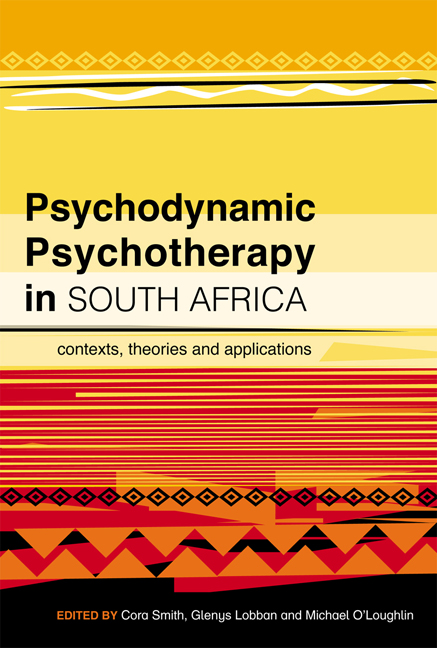Book contents
- Frontmatter
- Contents
- Editors
- Contributors
- Acknowledgements
- Acronyms
- Introduction Cora Smith
- Section I Subjectivity and identity
- Section II Traumatic stress
- Section III Social issues
- Chapter 6 Unconscious meaning and magic: Comparing psychoanalysis and African indigenous healing
- Chapter 7 Intimate partner violence in post-apartheid South Africa: Psychoanalytic insights and dilemmas
- Chapter 8 Serial murder and psychoanalysis in South Africa: Teasing out contextual issues amid intrapsychic phenomena in two case studies
- Chapter 9 Some psychoanalytic reflections on a project working with HIV orphans and their caregivers
- Chapter 10 Reclaiming genealogy, memory and history: The psychodynamic potential for reparative therapy in contemporary South Africa
- Afterword Glenys Lobban and Michael O'Loughlin
- Index
Chapter 8 - Serial murder and psychoanalysis in South Africa: Teasing out contextual issues amid intrapsychic phenomena in two case studies
from Section III - Social issues
Published online by Cambridge University Press: 21 April 2018
- Frontmatter
- Contents
- Editors
- Contributors
- Acknowledgements
- Acronyms
- Introduction Cora Smith
- Section I Subjectivity and identity
- Section II Traumatic stress
- Section III Social issues
- Chapter 6 Unconscious meaning and magic: Comparing psychoanalysis and African indigenous healing
- Chapter 7 Intimate partner violence in post-apartheid South Africa: Psychoanalytic insights and dilemmas
- Chapter 8 Serial murder and psychoanalysis in South Africa: Teasing out contextual issues amid intrapsychic phenomena in two case studies
- Chapter 9 Some psychoanalytic reflections on a project working with HIV orphans and their caregivers
- Chapter 10 Reclaiming genealogy, memory and history: The psychodynamic potential for reparative therapy in contemporary South Africa
- Afterword Glenys Lobban and Michael O'Loughlin
- Index
Summary
CRIME AND SOUTH AFRICA
Crime, especially violent and sexual crimes such as rape and murder, pose particular problems for the South African context. According to the South African Police Service (SAPS) Crime Statistics published for 2010, there were approximately 2 million reported crimes that year. Of the overall tally of crimes that took place in South Africa from April 2009 to March 2010, 16 834 occurrences were of murder and 68 322 of sexual crimes. Both of these crimes fall under the contact crime category of criminal acts, which accounts for 31.9% of total crimes reported in South Africa; murder accounts for 2.5% of all contact crimes and sexual crimes for 10% of all contact crimes.
Additionally, the United Nations Office on Drugs and Crime's survey of international homicide rates for 2009 found that South Africa has a homicide rate of 36.5 per 100 000 population, ranking ninth internationally (UNODC, 2009). Murder as a sub-category of criminal behaviour consequently features prominently among important issues to be addressed in the South African context, and frequently as an issue of considerable concern in the daily lives of South Africans.
Working therapeutically with criminal populations poses challenges both in terms of developing effective strategies for pre-emptively addressing psychological and social factors that increase vulnerability to criminal behaviour, as well as providing rehabilitative interventions for individuals already incarcerated or apprehended. Psychoanalytic theory and approaches have provided a plethora of texts and formulations of personality structure together with the defence mechanisms and ego functioning of the criminal and, notably, the antisocial personality (Bluestone & Travin, 1984), but they are still relatively deficient in providing suggestions as to how one may work therapeutically with such individuals, if this is at all possible. The majority of existing and early psychoanalytic literature in this area emphasised intrapsychic factors, especially libidinal and aggressive drives and the role of the superego, and neglected the role played by contextual factors and the external world. Fitzpatrick (1976) describes a change in psychoanalytic studies of criminal motivation as shifting to encompass contextual diversity in the manifestation of antisocial character, as well as emphasising the etiological significance of character development, adaptational functions of the ego and the role played by environment.
- Type
- Chapter
- Information
- Psychodynamic Psychotherapy in South Africacontexts, theories and applications, pp. 194 - 217Publisher: Wits University PressPrint publication year: 2013



